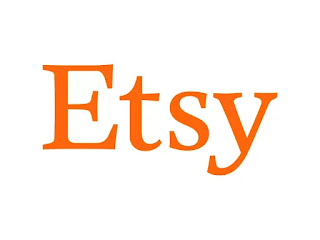Preparing with Everb
1. Registering with Everb
Start by signing up for Everb. This platform provides valuable analytics to guide product selection. You can register using your Google, Etsy, or email and password. For email sign-ups, connect your Etsy shop by clicking "Connect Your Shop" in the top right corner. Grant access, and your account is linked.
2. Installing the Everb Chrome Extension
With your shop connected, install the Everb Chrome extension, available on the Everb website. Once added to Chrome, you're ready for the next steps. Refresh your Etsy page to see the Everb logo, indicating activation.
Uncovering High-Earning Digital Products
1. Starting with a Broad Search
Begin your search with the most common keyword: "digital products." This reveals a diverse range of products, serving as a starting point.
2. Utilizing Product Analytics
Navigate to the "Product Analytics" section in Everb. Here, you can sort products by monthly revenue, requiring a premium account but well worth the investment. Sorting by monthly revenue highlights top-performing products. For instance, in a given month, the top product might earn around $27,000.
3. Understanding Product Relevance
Contrary to what some tutorials might suggest, don't worry about these products' continued relevance. Everb displays estimated last month's revenue. Even if a product has been listed for a long time, its consistent revenue indicates ongoing interest.
Narrowing Your Search: Keyword Research
1. Common Pitfall: Competing Directly with Top Sellers
A critical mistake is diving into high-earning categories like "digital planners" without considering competition. High-earning keywords like "digital planner" have over 500,000 competitors, making it difficult for new sellers to rank well.
2. Refining Keywords
This is where Everb's keyword research tool comes in. Searching "digital planner" within the keyword research tool displays related keywords along with their search volume and competition data. Focusing on keywords with high search volume but low competition gives you a better chance of ranking higher.
3. Keyword Example
Instead of targeting "digital planner," consider "ADHD daily digital planner," which has a search volume of 430 and only one competitor. This niche keyword allows you to focus your product design more specifically, enhancing its appeal to your targeted audience.
Organizing Keyword Data
1. Creating a Google Sheet
Organizing your keyword research data is crucial. Create a Google Sheet with columns for "keyword," "volume," "competition," and "keyword score." Populate the sheet with relevant data gathered from Everb to track the most promising keywords.
2. Keyword Example
Keyword: ADHD daily digital planner
Volume: 430
Competition: 1
Keyword Score: High
Exploring Additional Products
1. Continuing the Process
When you run out of keywords for one product, return to the initial product analytics and begin a new process with a different type of digital product. For example, after exploring digital planners, you might notice "Master Resell Rights" products also generate high revenue.
2. Keyword Research for New Products
Repeat the previous steps for this new category by searching for "Master Resell Rights" in product analytics and then delving into relevant keywords.
3. Keyword Example
Using the same method, you might discover keywords like "master resell rights eBook," which might be less competitive and offer high earning potential.
Summary and Final Thoughts
Finding the right digital product to sell on Etsy demands a meticulous and strategic approach. Leveraging tools like Everb for product analytics and keyword research allows you to uncover niches with high potential and low competition. This method not only helps identify trending digital products but also shapes your product listings to maximize visibility. Through careful analysis and persistent research, you'll be on the right track to Etsy success.
via emka.web.id




0 comments:
Post a Comment